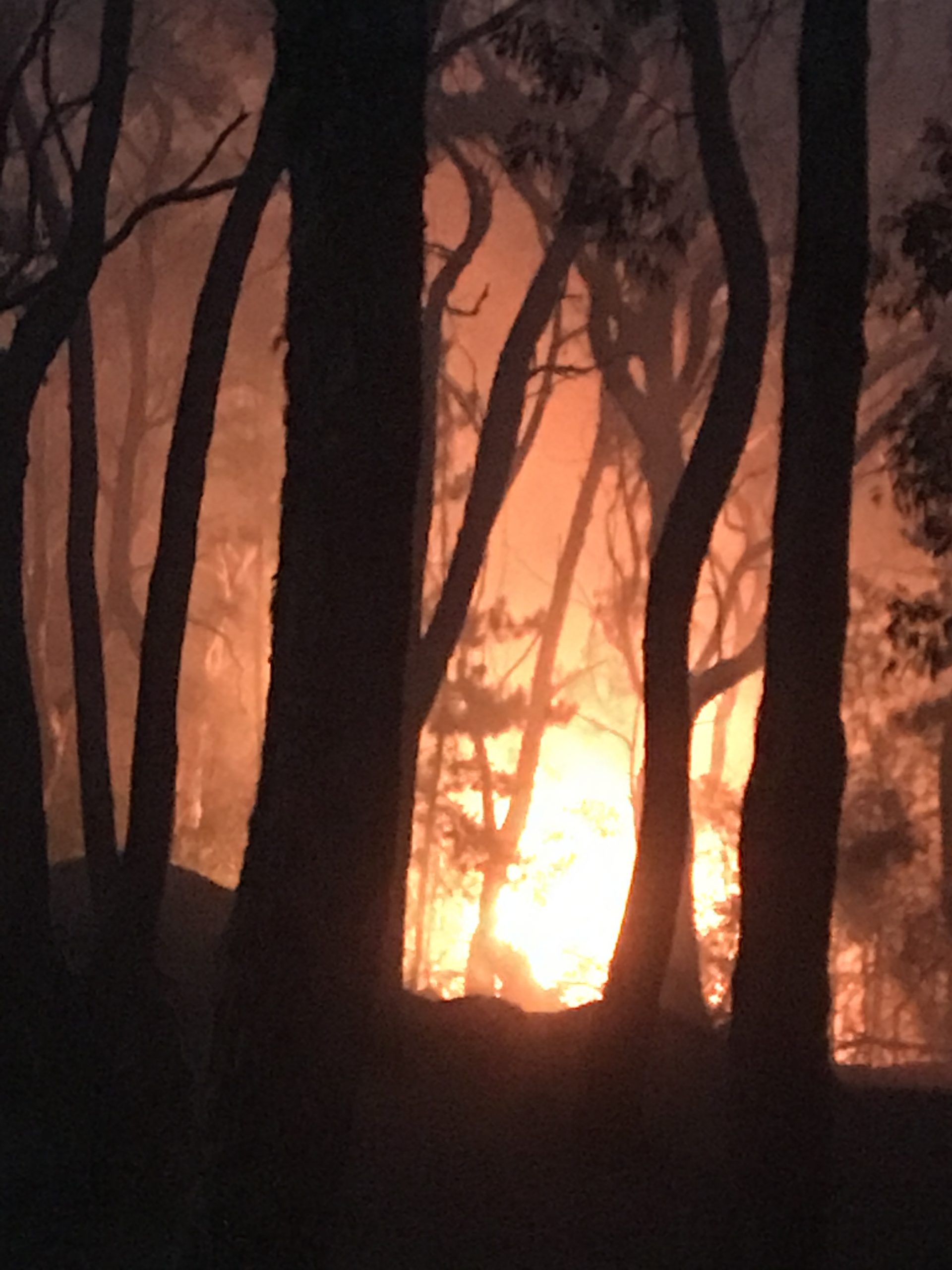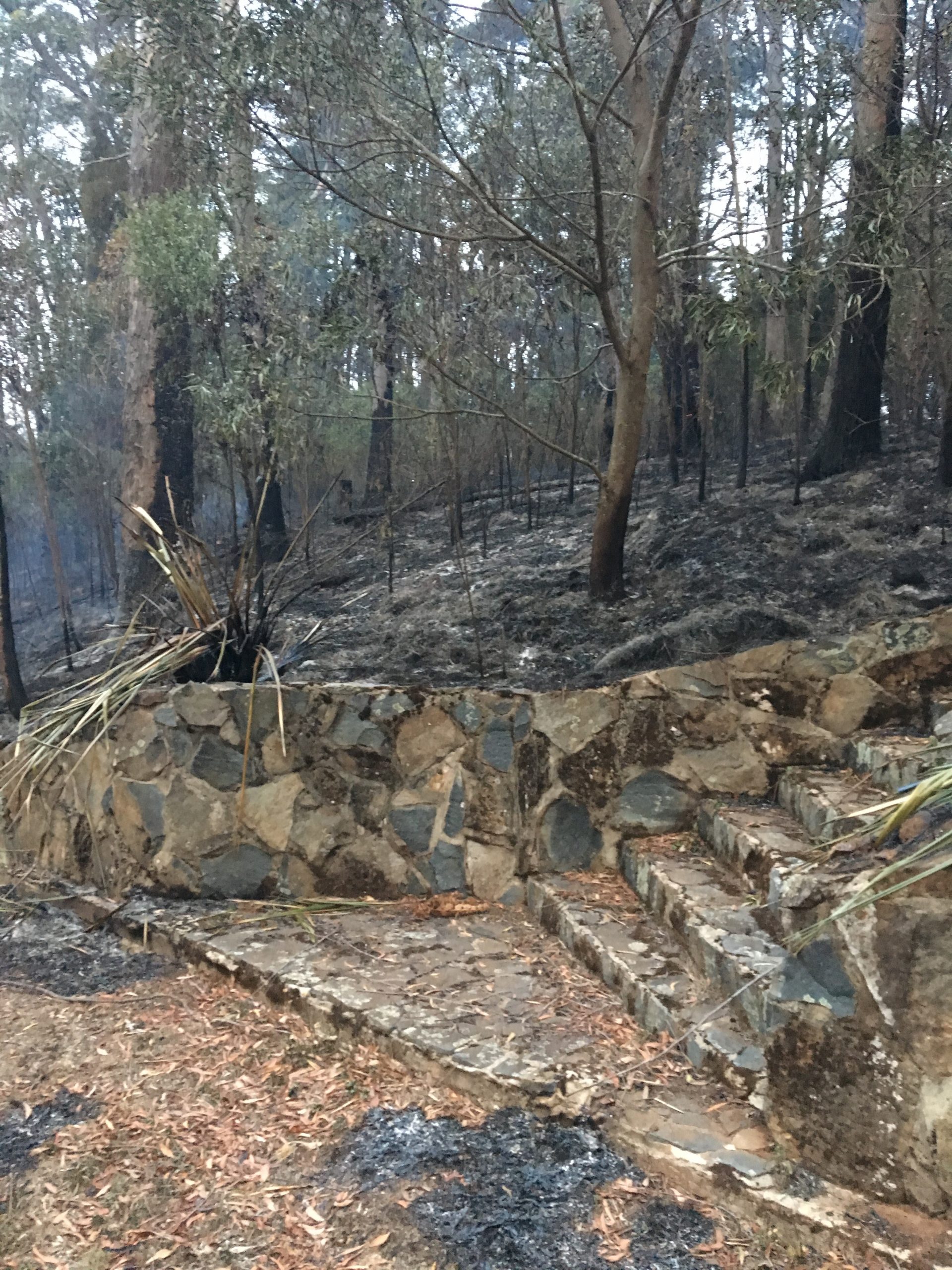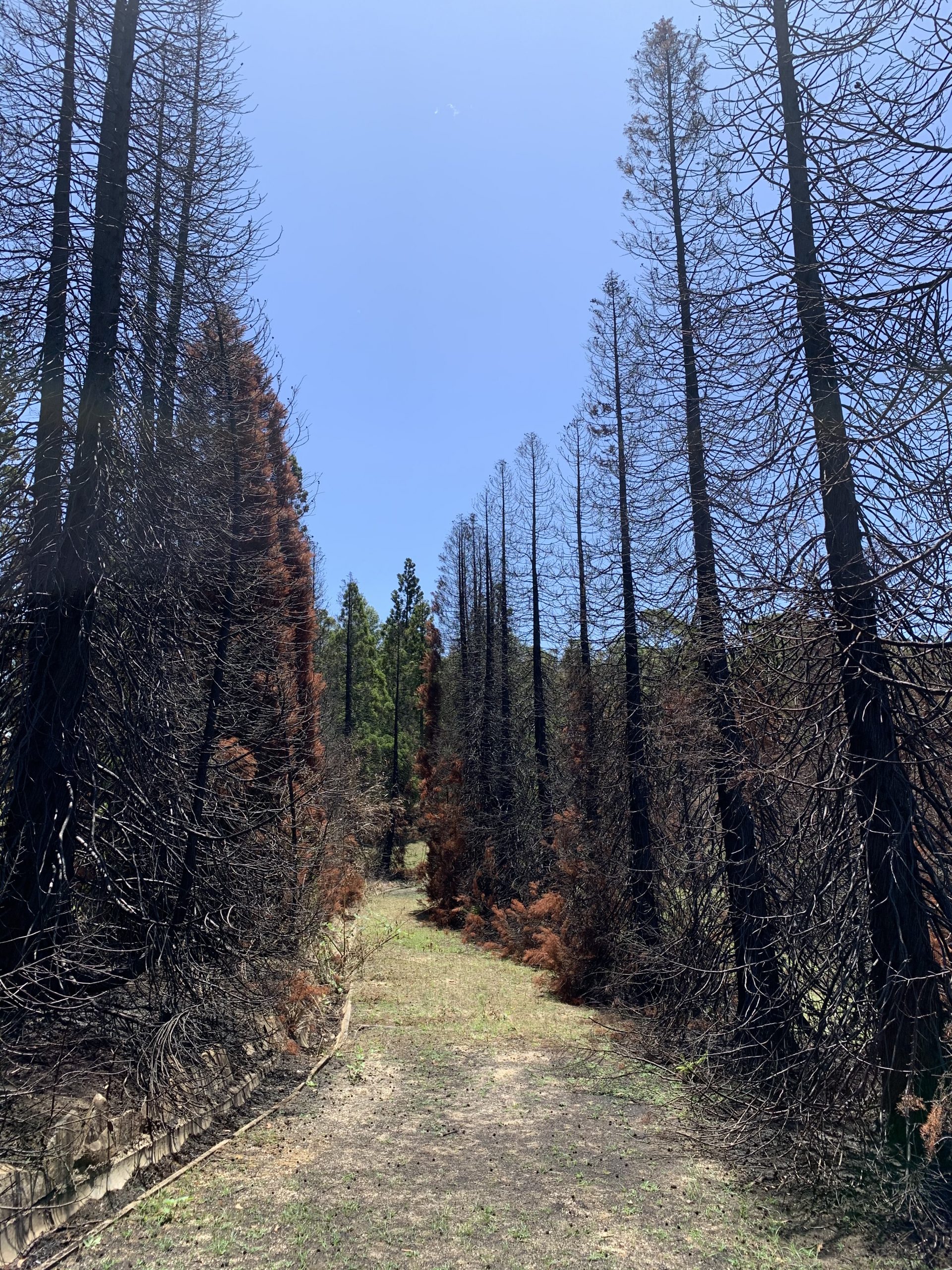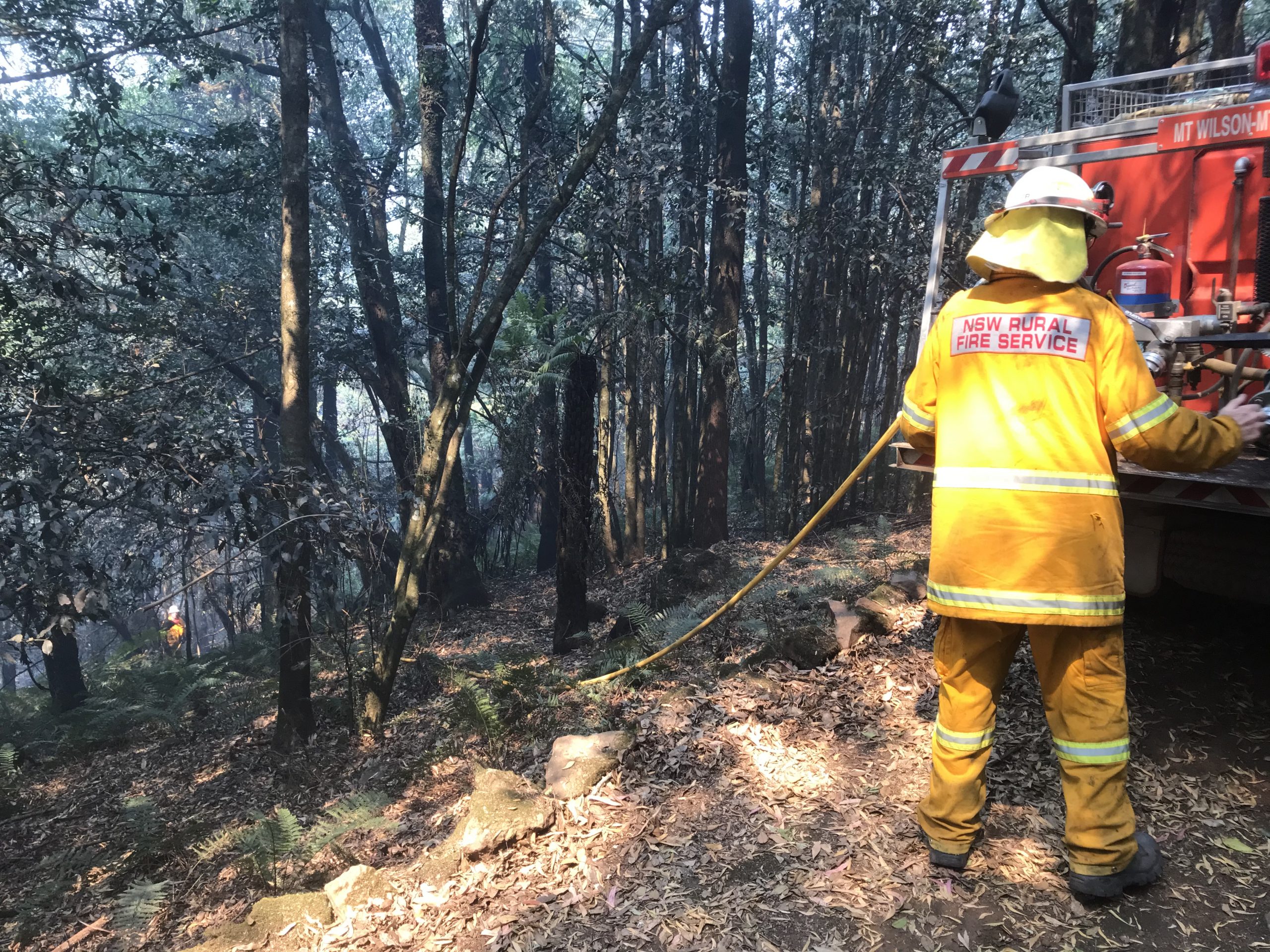Geology, Soils & Climate
Geology
Mount Wilson, on which Breenhold Gardens stands, lies 1,000 metres above sea level. Some 150 million years ago there was considerable volcanic activity in the Blue Mountains region. Several volcanic necks flowed up from cracks in the underlying sandstone. Subsequently, between 14 and 17 million years ago, basalt lava swept over the surface terrain. In areas of the Blue Mountains this basalt flow was up to 140 metres thick. Now the remnant basalt, formed from the cooling lava, remains only on the several high peaks of the mountains, of which Mount Tomah, Mount Wilson and Mount Irvine are examples.
Rocks, Soils & Native Flora
The basalt rock has weathered into a rich, red, volcanic soil, containing significant amounts of phosphate. This very fertile soil has enabled the growth of lush temperate rain forest – typically comprising sassafras, coachwood, eucalypts, lilli pilli and tree ferns. These native forest trees are the backbone on which the gardens of Breenhold have been developed. The rich basalt soils on Breenhold also provide the perfect growing medium for almost every species of tree and shrub the world has to offer. Basalt rock outcrops on the property have provided the stone for many of the stone walls and pathways in the Garden.
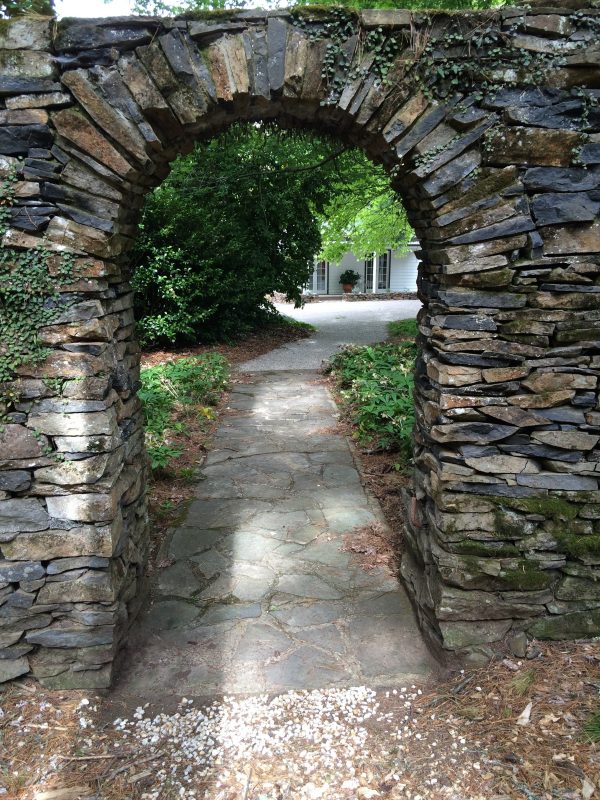
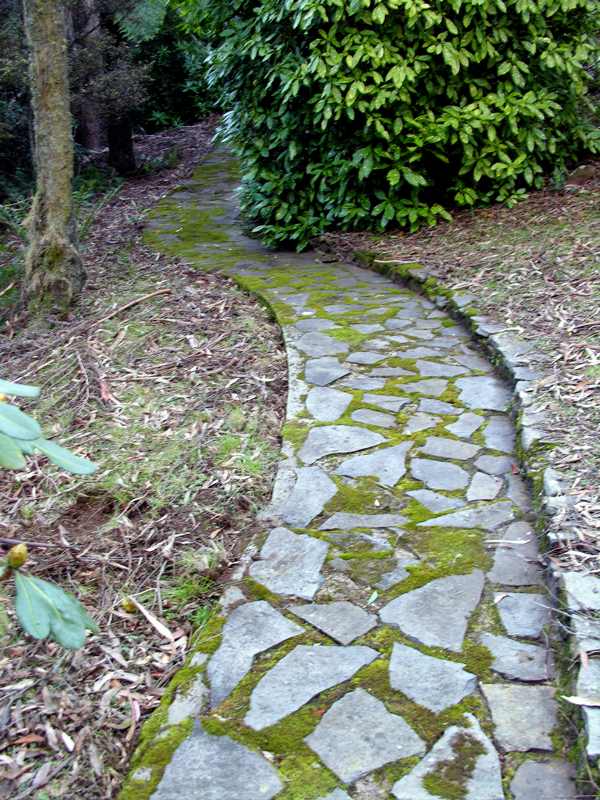
Climate
Combined with high rainfall (most of the time), with an annual average over the past 10 years of 971mm, a temperate climate, and plentiful artesian bore water, Breenhold’s natural resources and location combine to produce a most desirable environment for its gardens to flourish.
A series of radiata pine windbreaks were first built in strategic locations on the perimeter of the property, which together with numerous stone and brick garden walls, combine to protect the garden areas from the high winds from the south and west. In fact, Breenhold has developed its own micro-climate.
2019 Bushfires
Bushfires are a constant summer threat in the Blue Mountains, and Mount Wilson has experienced a number of these in the past 50 years.
In November 2019 a fire began burning out of control at Gospers Mountain in the Wollemi National Park, some 60 km north of Mount Wilson. By mid-December it and additional fires threatened and burnt out some 520,000 hectares in the Blue Mountains and in areas to the north and west of Sydney. In an attempt to protect the Blue Mountains from the Gospers Mountain bushfire, Rural Fire Service firefighters commenced a large backburn on 14 December in the Mount Wilson and Mount Irvine areas. Due to heavy fuel loads and erratic weather conditions, the backburn quickly grew out of control, threatening houses in Mount Wilson and Mount Irvine, several of which were burnt down.
Fire-fighting helicopters filled their water buckets from Breenhold’s main dam. Road tankers also sourced water pumped from Breenhold’s dam, as they have done in past firefighting operations. Breenhold survived. The main garden areas were not impacted. The greatest fire impact was on the western sector of Breenhold, adjacent to the Blue Mountains National Park, where the fire swept across the Fire Trail and up Breenhold’s slopes to the Sub Alpine Way and Terrace Drive. Due to wind-borne embers, the fire jumped The Avenue and irreparably burnt a 60 years old stand of Japanese Cedars in the Dam Paddock. In total 12 hectares of native bushland were burnt on Breenhold. Much of this is beginning to naturally recover.
Click here to view our videos from the 2019 bushfires.
